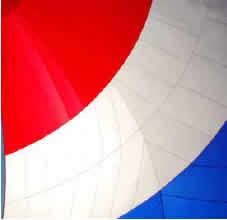Photo by Ralph Naranjo

I don’t believe the village of Warapu exists anymore. The ocean carried it away. The school . . . the district government building . . . most of the houses . . . all gone . . . washed out to sea by a tsunami that crashed ashore in Papua New Guinea in 1998.
Some people say the three big waves that killed everyone or chased them away didnt come from an earthquake. A hot bubbling explosion of gas shot up from the center of the earth, they say. Why else would the water be so hot? What else explains the red and yellow flashes?
At the moment of detonation, we were a few hundred miles to the north, drifting in a near windless calm between Palau and Papua New Guinea, en route to Halmahera in Indonesia. That we could move in so little wind amazed me. Especially since Tosca weighed 12 tons and dragged a long, full keel.
Theres something eerie about sailing in water so smooth you can see your reflection in it. Its as if were cheating Aeolus, or have sold our souls for the power to sail in a forbidden wind-one we can barely feel.
Nine years ago in these pages, we had high praise for several varieties of spinnaker socks. We were impressed by how they made handling 1,000 square feet of cruising spinnaker seem easy. Sock up, sock down-setting and dousing the sail was that simple. There were a few problems. Control lines tangled or twisted, socks got stuck, sails tore. Mostly, though, the devices worked.
Now we are testing a new generation of furlers for asymmetricals. These smart bits tame fat-bellied cruising chutes better than we ever imagined. It doesn’t seem fair. Calms are supposed to be the sailors penance.
On Tosca, we used a sock to set and douse our cruising chute. The sock didnt always cooperate, and because the sail was so valuable, we didnt fly it at night. We feared losing it in a squall. But on that night between Palau and Papua New Guinea, with stars bright on the water, we left it up and let it fill with faint breezes. We enjoyed the perception of making progress, of moving more than 50 miles in one day. We admired our shapely, easy to manage, light-air sail.
In the morning, we saw the first shoes in the water-kids rubber flip flops, worn tennis shoes, white leather ladies sandals with brass buckles, nice enough to wear to church. We saw wooden mixing bowls for making bread, detergent bottles, a baby doll, scraps of paper and cloth.
At first, we thought it was trash from a freighter, jetsam deliberately dumped in the sea. Then, that evening, we heard more news of the tsunami on the shortwave. I urged Tosca to the east, afraid of what else we might find.
Now, whenever I write about spinnakers, socks, or furlers, or whatever new development is here to help us outsmart the wind gods, I feel a tinge of guilt. I think of Warapu and what we saw in the water that day . . . and how glad we were when the wind returned to carry us to another part of the sea.

































